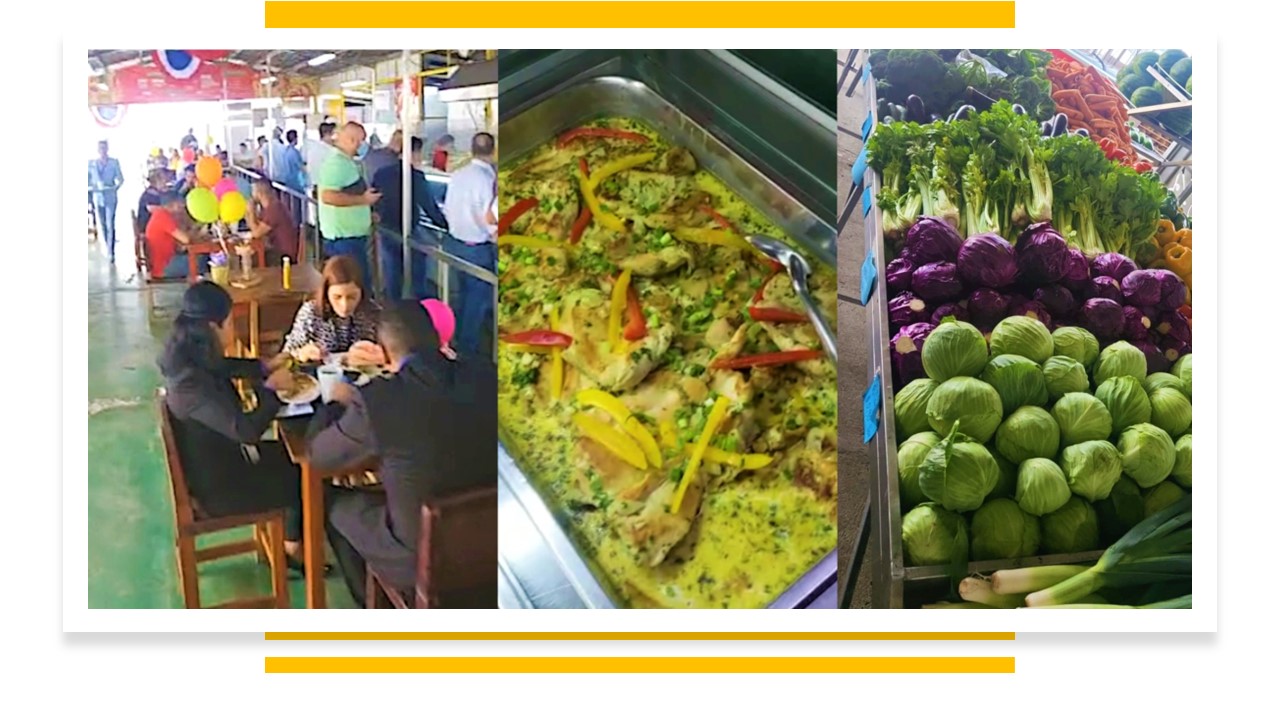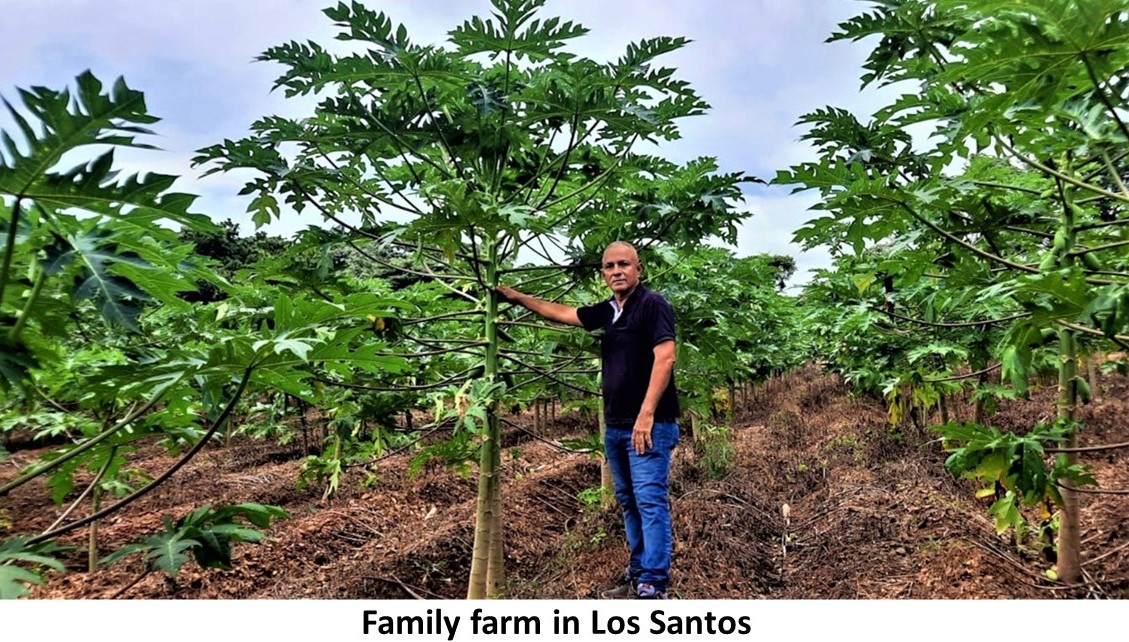Mama Gallina- Overnight from Farm to Fonda

By Robert C. Thornett
On a corner near skyscrapers of glass and steel in downtown Panama City (Obarrio) sits a slice of rural Panama called Mama Gallina, “Mama Hen.” Facing the street is its breezy open-air fonda, a farm-to-table diner serving cafeteria-style breakfast and lunch to hundreds each day. Stretching behind is its farmer’s market, where overnight trucks pull in before dawn each morning with meats, fish, and produce from faraway provinces in “El Interior,” Panama’s countryside.
“The fish you eat today came from the ocean at 4 am today,” says Vidal Velasquez, who co-manages Mama Gallina with his wife, Izenith Galvez. “If we cut a guanábana fruit at 12 noon in Chiriquí, it will leave at 4 pm on a truck that arrives by 5 am the next day.” All the produce is typically used in the fonda, including its natural juice bar, or sold in the market on the same day it arrives.
Mama Gallina is owned by the Galvez family, who are natives of La Espigadilla in Los Santos province, four hours from Panama’s capital. About 15% of the operation’s produce comes from the family’s own farms in Los Santos, and the rest comes from other local growers around Panama.
 While modern agribusinesses often spray chemicals like ethylene to speed up the ripening of crops such as apples, bananas, avocados, and mangos, all of the farms supplying Mama Gallina let their produce ripen naturally on the plant.
While modern agribusinesses often spray chemicals like ethylene to speed up the ripening of crops such as apples, bananas, avocados, and mangos, all of the farms supplying Mama Gallina let their produce ripen naturally on the plant.
When Mama Gallina opened in 2001, Izenith’s grandmother, Nazaria, moved to Panama City three times a year to train the cooks and spend time with her grandchildren. “She did it will all her love, for free,” says Izenith. “It’s not only the cooking but the love, and the place, Los Santos, that we are trying to recreate in the city.” In fact, except for a few who retired, all of the cooks who first trained with Nazaria in 2001 are still working at Mama Gallina today. And at 84 years old, Nazaria still trains cooks five weekends each year at her house in Los Santos.
Mama Gallina carries many fruits and vegetables native to Central and South: America, including the nance, soursop (guanábana), naranjilla or lulo, chayote, tree tomato (tamarillo), and passion fruit (maracuyá). Many of these are used in the juice bar, where Izenith hopes to curb Panamanians’ habit of drinking soda and get them “hooked on a healthier style of life.” And there are tables piled with plantains and large tropical root vegetables as big as footballs and fire logs, including cassava (yuca), otoe (malanga), ñame, and purple yams (ube). Fresh cilantro and anatto (achiote in Panama) are always in the market, as they are central to Panamanian cooking.
With a population of 1,600, the Galvez family’s hometown of Espigadilla lies on the warm, green Pacific coastal plains of the Azuero Peninsula. Sparsely populated and pastoral, the Azuero region is known as the cultural heart of Panama. A festival displaying its traditional crafts, music, and dancing is televised nationwide each year during Carnival week when Los Santos’ provincial capital Las Tablas transforms into Panama’s party capital. Los Santos was one of the first areas in Central America to be colonized by the Spanish, and today, roughly 70% of “Santeños” have some Spanish roots, far more than the rest of Panama.
Cooking is one of many hands-on trades and crafts deeply embedded in Santeño culture. “In Los Santos, when you reach high school, you can take classes in cooking, sewing, farming—not after school, in school,” says Izenith. And most Santeños are good cooks, she says because they pass their knowledge from generation to generation: “You don’t keep the knowledge just for you. You have to pass it.”





